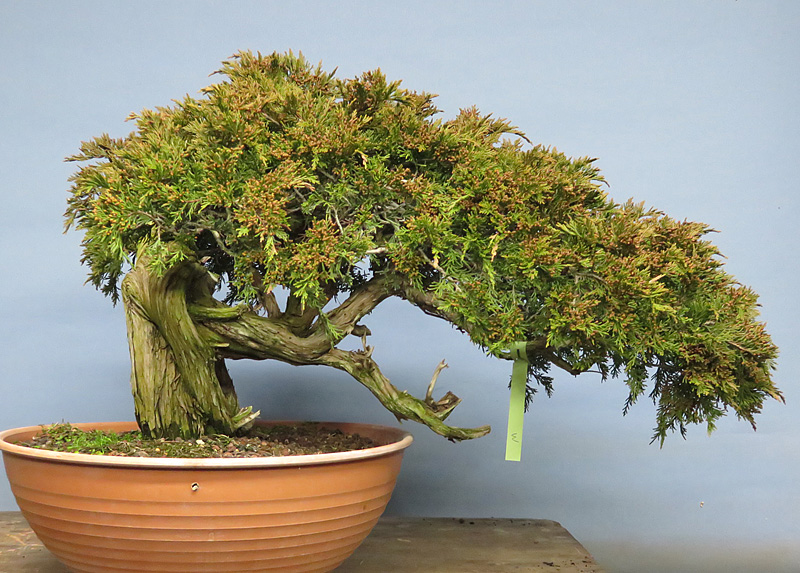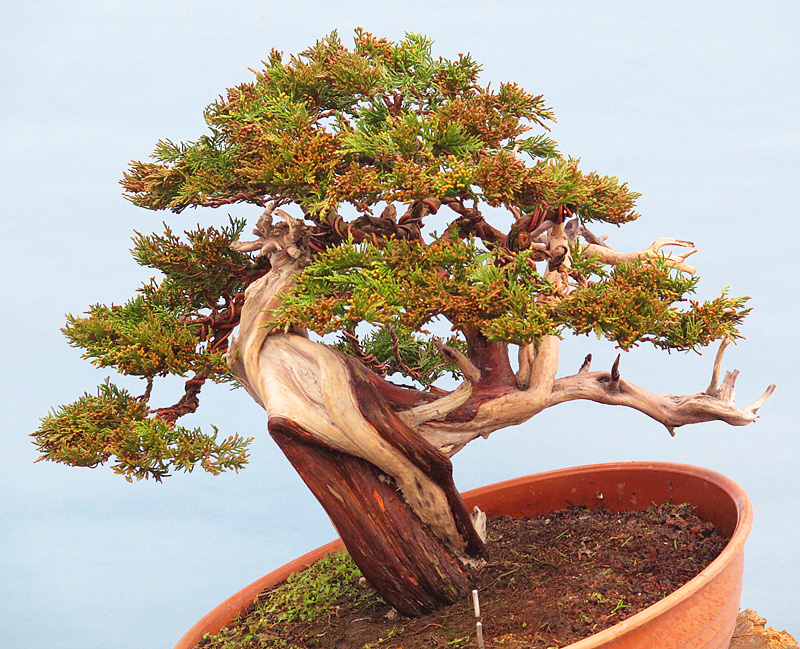Way back when I started messing with bonsai I suffered serious bonsai envy when looking at the bonsai books I got from the library. The thing that impressed me most was the beautiful junipers I saw from Japan. Their stunning deadwood, contrasting red live veins and awesome foliage left me weak at the knees. Being in straitened circumstances I figured I would just have to content myself with admiring these beautiful trees from afar.
Part of the problem was that in UK bonsai the only source of good junipers at the time was from Japan. Most of them were eye-wateringly expensive and being nursery produced were also not exactly exciting. I remember when my best mate and I both managed to procure an almost matching pair of small Japanese needle junipers with good live veins and deadwood. We were both so excited we were ready to pass out. Being a couple of ignorant hicks we managed to kill the trees in pretty short order.
After that the only junipers I had were massive garden varieties with naff foliage or the ubiquitous Blaauws variety from a local grower. I did manage to produce some half decent bonsai from that material, in fact I still own one of them, but I was a very long way from my dream of a beautiful yamadori juniper like I saw in those old books.
Fast forward twenty five years and everything has changed. My circumstances have improved but those old Japanese masterpieces are hard to come by these days and command telephone numbers when they do become available. However my dreams have come true many times over thanks to the availability of the wonderful Spanish sabina juniper. I have lost count of how many of those beautiful gnarled twisty trees have passed through my hands now. The trouble these days is not the procurement of a wonderful tree but finding the time to do it justice. Junipers are extremely time consuming to work, particularly when it comes to first work.
If you have watched any of our videos about working junipers, read between the lines and you will see just how much time and effort goes into getting a sabina cleaned up, wired and styled. By and large we don’t do much work on our yamadori junipers, since I have to add an hourly rate to the tree afterwards the numbers just don’t add up. However this week I fell under the spell of one of these great trees and whipped it into shape.
Styling a juniper pretty much starts and ends with wiring and the better and finer the wiring the better the finished result will be. I particularly hate wiring junipers, my stubby fat fingers don’t lend themselves to fine work but sometimes we just have to knuckle down and get on. The only thing worse that wiring a juniper is wiring a juniper at five degrees below freezing, which it’s been this week.
This juniper has been sitting around now for a couple of years and it was just at the point where, if it were not worked, it would begin to go past a point of no return without a brutal haircut. So a few wire brushes and a half pound of copper later and here it is…….
G.

Spanish sabina on Saturday, in from the snow.

Friday afternoon. It’s been a very cold week, work progressed slowly! Sorry the picture’s not great my poly tunnel is covered in snow.

Looks great Graham
That is absolutely lovely ! I want one !
Well, that’s impressive.
Ooh had my eye on this tree for last few months,what a difference!!
Do the flowers slow down growth and development graham?? I have a sabina with them purchased from you last autumn
Thanks Darren
Flowers make no difference whatsoever to the general growth rate.
G.
Some trees are so gripping – I can see why you were under a compulsion! Wow…
I suffer Bonsai envy when I see your trees so I guess you have progressed. Love & Peace and happy Bonsai.
Just started out with bonsai. Know how you felt.
Nice to hear you’re back on your feet, thanks for the amazing Crab Apple and good luck with the Japanese trees arriving shortly.
Anybody taking the time to read this, PLEASE watch the “Mobius Loop” video under the “Articles” heading. I defy you not to swear when Graham cuts the big branch off.
The man’s a genius.
Quite awesome! You are a true artist Graham.
Your love of trees and all things natural is amazing.